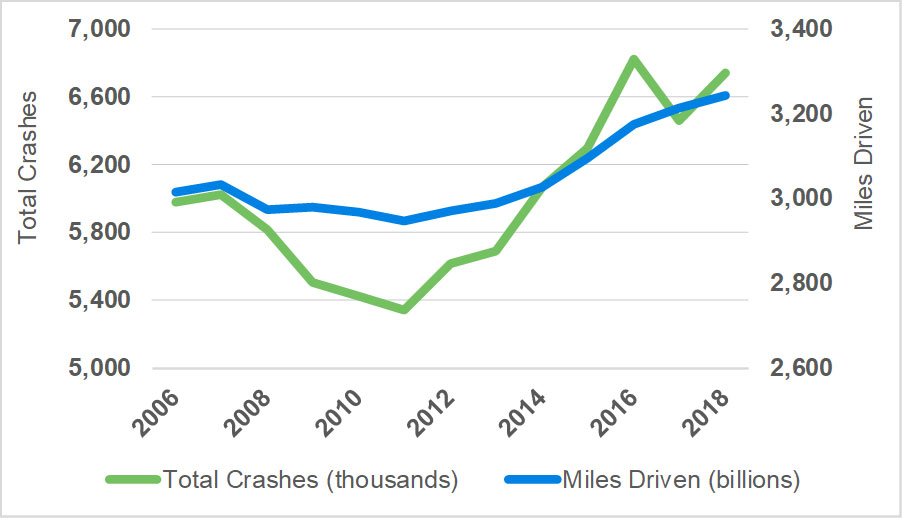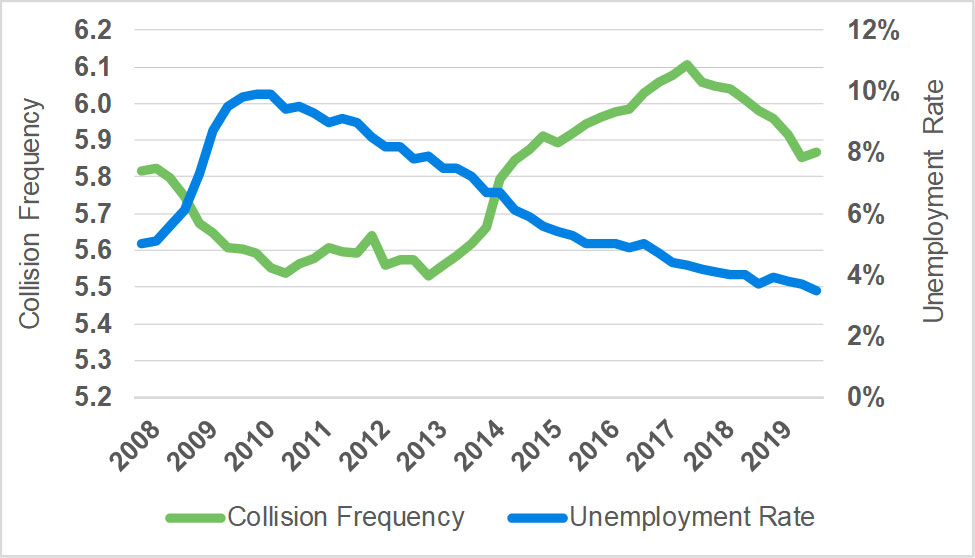As the world focuses on the myriad of crucial issues related to the growing COVID-19 pandemic, perhaps one of the last concerns is how the coronavirus might affect auto insurance. Even auto insurers themselves may be more concerned at the moment with adapting operationally to a virtual environment than the impact the virus may have on their claims experience. However, while the health and welfare of people around the world is the most important concern, the outbreak of the virus will no doubt have far-reaching effects on all aspects of our lives, including our driving behaviors. As a result, auto insurers may likely see short- and possibly long-term effects in their claims experience.
In the short term, the auto insurance industry will likely see a sudden and sharp decline in the volume of reported claims due to social distancing and stay-at-home mandates. With many businesses closed and a large proportion of the population now working from home, fewer vehicles are on the roads, especially during peak rush hour times. This reduction in the amount of time that vehicles are driven will likely result in fewer car accidents, which will correspond to fewer claims reported to insurers. As a result, insurers should see their auto claims frequencies (measured as the number of claims per vehicle) decrease. The relationship between miles driven and the prevalence of auto accidents can be seen in Figure 1 below.1
Figure 1: Historical crashes and miles driven by year

However, unlike the figure above, which depicts gradual changes over time, shifts in miles driven and auto claims frequencies due to social distancing will likely be much more abrupt. Further, the timing and size of the drop in frequency will likely vary geographically based on how quickly and to what extent communities respond to the outbreak.
Whether or not the effects of social distancing will be felt over a prolonged period of time will be dependent on how quickly the economy recovers once day-to-day life returns to normal because a sluggish economy could have lasting long-term effects on auto claims frequencies. Historically, the frequency of auto accidents has been correlated with the state of the economy. High levels of unemployment typically translate into fewer miles driven because a greater number of individuals no longer commute to work on a regular basis. In addition, as consumers have less discretionary income to spend on goods and services, they drive less. This sustained reduction in miles driven typically leads to a reduction in auto accidents, which reduces the number of claims reported to insurers. This phenomenon can most recently be demonstrated by the global financial crisis of 2008. As shown in Figure 2, a spike in unemployment driven by the weak economy in 2008 through the early 2010’s corresponded with a reduction in the auto collision frequency for the industry.2 However, as the unemployment rate returned to its pre-recession levels in 2013 and 2014, so did the collision frequency. This inverse relationship has since continued as the collision frequency has remained relatively high as unemployment continued to decline through 2019. While other factors can contribute to changes in claims frequencies, such as distracted driving, increases to speed limits, and significant changes in gas prices, the rate of unemployment is clearly a significant contributor as well.
Figure 2: Historical collision frequency and U.S. unemployment rate by year

Though social distancing measures have only recently been adopted by society, their effects are already being realized economically. Over 3 million unemployment claims were submitted during the week ending March 21, 2020 (the previous record for most unemployment claims submitted in one week was 695,000).3 In fact, leaders of the Federal Reserve have predicted that unemployment in the U.S. could rise to a staggering 30% as a result of the economic disruption caused by the coronavirus pandemic.4 While it is unclear whether that short-term estimate – a result of social distancing – will have broader ramifications felt as long as the global financial crisis, should social distancing measures trigger a national recession, auto insurers can likely expect auto claim frequencies to remain suppressed until unemployment rates return to their pre-pandemic levels. And even then, frequencies may not return to their pre-pandemic levels if a significant portion of the work force adopts more permanent work from home arrangements when social distancing ends.
The effect that a reduction in auto claims frequencies will have on auto insurance rates is less clear. Actuaries help establish rates to cover the expected future costs of coverage. So by the time the effects of COVID-19 manifest in the historical data, actuaries may not believe the observed reductions in frequency will persist in the future and may choose not to reflect them in their ratemaking calculations. In addition, usage-based insurance programs that rely on the number of miles driven in the prior policy period to set the rates for the prospective policy period may also need to evaluate how to respond to the temporarily suppressed mileage. Indeed, how strange the world has become where we hope that our current situation, as grim as it may be, is nothing more than a blip in the data.
1Fatality Facts 2018. Yearly snapshot. The Insurance Institute for Highway Safety. Retrieved on March 27, 2020, from https://www.iihs.org/topics/fatality-statistics/detail/yearly-snapshot. Transportation Accidents by Mode. U.S. Department of Transportation. Bureau of Transportation Statistics. Retrieved on March 27, 2020, from https://www.bts.gov/content/transportation-accidents-mode
2Unemployment Insurance Weekly Claims Data. U.S. Department of Labor. Employment & Training Administration. Retrieved on March 27, 2020 from https://oui.doleta.gov/unemploy/claims.asp. ISS/ISO/NISS Private Passenger Fast Track Data Q1-2012, Q4-2015, and Q3-2019 Multi-state. Retrieved on March 27, 2020.
3Zarroli, Jim and Schneider, Avie. 3.3 Million File For Unemployment Claims, Shattering Records. NPR. (March 26, 2020). Retrieved on March 27, 2020, from https://www.npr.org/2020/03/26/821580191/unemployment-claims-expected-to-shatter-records
4Matthews, Steve. U.S. Jobless Rate May Soar to 30%, Fed’s Bullard Says. Bloomberg. (March 22, 2020). Retrieved on March 27, 2020, from https://www.bloomberg.com/news/articles/2020-03-22/fed-s-bullard-says-u-s-jobless-rate-may-soar-to-30-in-2q